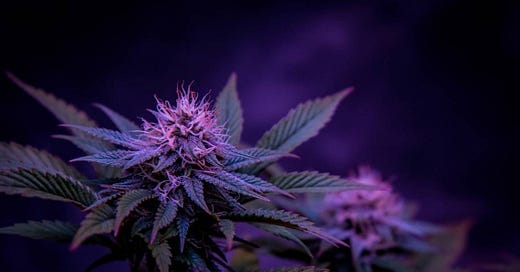"This Aint Your Grandpa's Weed..."
A debate in drug policy over what to do about marijuana potency in retail markets; Also, a new study shows marijuana does not cause "mass psychosis." Bring back mids!
I hear a version of this argument all, the, time:
Middle-aged (white) men start talking about marijuana legalization. They say something like, “Look, nobody should goto jail for smoking a joint, but the weed out out there is outta control! Who knows what kinda effects these uber-potent weed strains are having on our brains.” They then launch into, “when I was a kid, the reefer…”
Yeah, it’s true. Weed in America for a long time was pretty weak. It wasn’t even mids, as the kids are saying nowadays; it was schwag. Seedy, stemmy, dark green leaves. For decades, the weed seized by the DEA usually hailed from Mexico and it was grown outdoors in massive grow operations with a potency about as low as you could get while still being sellable as weed, averaging roughly 4 percent potency. That low potency could still get you high, though it was a qualitatively different kind of high.
At least compared to today’s weed, caked in crystals, nugs that look like a lit-up Christmas tree draped with shiny tinsel. In both illegal and legal markets today, marijuana’s potency is about 21 percent; high-potency strains are about 30 percent. Then there’s a whole galaxy of dabs, wax, oil, and shatter—mega-concentrated weed extracts that are advertised as >90 percent potency.
So, what ought to be done about today’s super potent weed? Should anything be done about it? A series of new articles by drug policy researchers suggests different strategies, from taxing high potency products to strong regualtory caps on potency to straight up bans of high-potency products.
The rest of this post about high potency weed products is for paid subscribers only.
Keep reading with a 7-day free trial
Subscribe to Substance to keep reading this post and get 7 days of free access to the full post archives.



